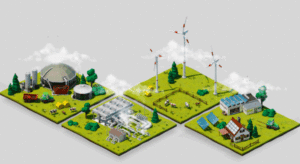Renewables need to increase four-fold to decarbonise the energy sector by 2050.
[dropcap]W[/dropcap]ith strict targets to reduce carbon emissions in a bid to contain rising global temperatures to within 2℃ above pre-industrial levels, the million dollar question is, can these be met?
For our sector the question is much more than academic. For one thing, the energy sector is the largest contributor to global carbon emissions, accounting for about two-thirds of the total, and therefore the one on whose shoulder the biggest burden of responsibility falls.
But also the response is driving the most far reaching changes the sector has seen, impacting industry players and consumers alike.
Well, the good news is that its technically possible for the industry to do its bit, reducing global energy-related emissions by 70% by 2050 and completely by 2060, according to a new study from the International Energy Agency (IEA) and International Renewable Energy Agency (IRENA), Perspectives for the Energy Transition.
And what does that ‘bit’ involve? Quite simply, at a high level, keep installing more and more renewables.
Renewables first
According to the study, currently renewables generation accounts for 24% of global power and 16% of primary energy supply. In order to achieve decarbonisation by 2050, renewables use will need to increase by four times, contributing to 80% of power generation and 65% of total primary energy supply. This is alongside additional energy efficiency measures and other low carbon technologies including nuclear and carbon capture and storage.
In itself, this won’t be sufficient, however.
[epq-quote align=”align-left”]Significant additional policy interventions will be required to ensure the integration of such high levels of renewables and the accommodation of their flexibility needs.[/epq-quote]
In addition, stronger price signals and carbon pricing would be required to ensure that climate considerations are taken into account in investment decisions.
A notable feature of the transition is that fossil fuels are still needed through 2050, standing at a third of today’s level. Among fossil fuel types, the use of coal would decline the most, but natural gas would continue to play an important role.
Surprisingly perhaps the total investment in energy supply would not need to rise over today’s level to achieve these renewables levels. However, significant additional investment of $29trn would be needed in industry and households for more efficient appliances, building renovations, renewables and electrification. Source – Engerati. Full article HERE.




